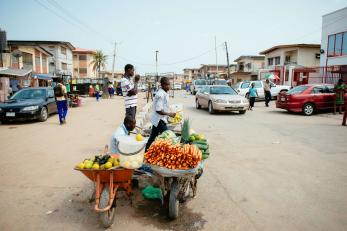Harnessing the Development Potential of Labour Migration
Challenging the Dominant Paradigm of “Development In-Place”

Download the executive summary ▸
Download the full report ▸
It is increasingly clear that climate change is contributing to the devastation of traditional livelihoods. A farmer from Guatemala explained to us, “before, our grandparents and parents planted in the open field. But the climate has changed and, now, that doesn’t produce enough crops.” For such individuals, seeking alternative sources of income is challenging — and can, in some cases, lead to migration.
Currently, most international donors' embrace a development approach that prioritises maintaining traditional sources of livelihoods in communities of origin. In the case of the Guatemalan farmer, for example, donors might double down in the face of climate change to improve and adapt crop production — with the ultimate goal of keeping the same farming community in place producing sufficient crops to sustain themselves.
Yet sometimes migration is inevitable, and in many cases, it is the best option to improve the economic outlook for communities. The majority of economic or labour migration occurs within countries, from farms to cities for example, or within regions where it is legally acceptable to cross borders in search of new economic opportunities. In some cases, communities adopt seasonal cycles of migration, where labourers move to cities for part of the year and return to arable farmlands for another.
Traditional development models must take into account communities' long-standing patterns of mobility, and indeed productive elements of migration, especially as climate change, rapid population growth, and development trajectories of low to middle-income countries will drive more people to leave rural areas and seek jobs, education and other opportunities outside of their communities.
This Mercy Corps study begins to contribute to a new approach by drawing on programs and country strategies of USAID and the European Commission in two key migrant-sending countries (Niger and Nepal). The study urges donors not to solely see migration from low-income countries as a failure of development but rather as an opportunity that bears both risks and rewards.


